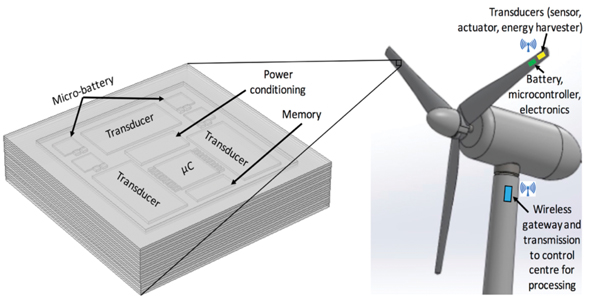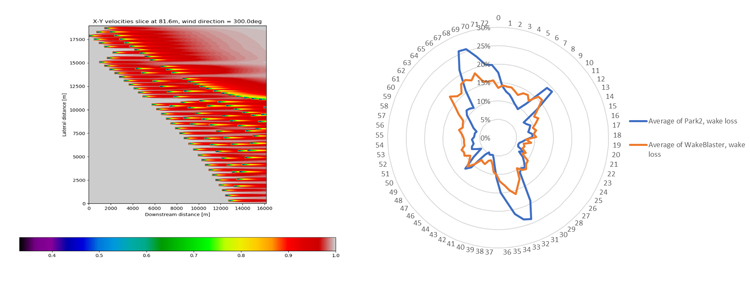- Category: Articles
 Fibre-Optic Load Sensing to Monitor Rotating Equipment
Fibre-Optic Load Sensing to Monitor Rotating EquipmentSensing360 recently released ‘the smart photonic sleeve’ to monitor the load applied on rotating equipment, like bearings and gears. Besides the standardised smart sleeve that serves a broad range of load sensing applications, the company’s fibre-optic sensing technology can also be used for customer specific solutions. Here we show a customer case where Sensing360 has provided a solution to monitor and verify strain levels in the stationary outer ring of a multimegawatt planetary gearbox. Algorithms have been developed that translate these strain signals into crucial engineering and operating parameters such as planet load sharing and torque.
By Georgo Angelis, Sensing360 and Unai Gutierrez Santiago, Siemens Gamesa
- Category: Articles
 New High-Resolution Simulations Show Goal is Achievable
New High-Resolution Simulations Show Goal is AchievableThe USA currently produces about 7% of its electricity from wind energy [1]. Here we summarise and elaborate on recent research that found that, even without expansion of land area used by wind turbines, the goal of 20% of US national electricity supply from wind energy by 2030 is readily achievable [1]. Quadrupling the installed capacity over the eastern two-thirds of the USA from 2014 levels using ‘repowering’ scenarios achieves the 20% of electricity from wind goal without substantial negative impacts on system-wide efficiency of power production or local climates [1].
By Sara C. Pryor and Rebecca J. Barthelmie, Cornell University, Ithaca, USA
- Category: Articles
A Net Zero Solution for Decarbonising Industry, Transport and Heat
 The awareness that renewable hydrogen can help to drastically reduce and even eliminate harmful emissions in many industries is growing at a fast pace, with many governments now setting targets to help combat climate change and air pollution.
The awareness that renewable hydrogen can help to drastically reduce and even eliminate harmful emissions in many industries is growing at a fast pace, with many governments now setting targets to help combat climate change and air pollution.By Dr Graham Cooley, CEO, ITM Power, UK
- Category: Articles
 A Way to Optimise Maintenance Costs
A Way to Optimise Maintenance CostsA growing number of wind turbines are operating in the second or third decade of their lifetime. As an owner of 20-year-old Micon turbines in Germany I would like to describe the possibilities and solutions for operating these wind turbines cost-effectively with the current low market prices for electricity supplied by wind turbines in Northern Europe.
By Dieter Fries, Ingenieurbüro Fries, and Dirk Nielsen, Wind Nielsen, Germany
- Category: Articles
 Using Solid State Batteries and Vibration Energy Harvester
Using Solid State Batteries and Vibration Energy HarvesterAs energy companies continue to look for more renewable and clean sources of energy, wind energy offers an ideal solution. However, this brings concern about the potentially high maintenance costs primarily due to difficulty accessing the blades. Fortunately, with developments in the internet of things leading to improved condition monitoring tools, sensors can be placed on the blades to provide real-time data of their health at any time. This in turn can enable essential maintenance to be carried out before failure due to common issues such as delamination, cracks, impact or ice. Powering these sensors is key to success – if the sensors themselves power down, then so too does the benefit of having a condition monitoring system.
By Denis Pasero, Product Commercialisation Manager, Ilika Technologies, UK
- Category: Articles
Designing High Performance Wind Farms
The relative importance of accurately modelling wake losses increases for large offshore wind farms, closely spaced wind farms, and wind farms in non-neutral atmospheric conditions. Wind farm wake losses of 20%, and uncertainties in excess of 5% in a pre-construction assessment, can make or break a wind farm project. High performance layouts significantly reduce wake losses and the associated uncertainties. A new generation of three-dimensional computational fluid dynamics wake models, designed to meet this challenge, has been developed and is now available to project developers.

By Wolfgang Schlez, Managing Director, ProPlanEn, UK
- Category: Articles
Turn Retired Blades and Production Waste Into Energy
An increasing number of rotor blades will come to the end of their design life cycle in the coming years. Figure 1 gives an estimate of the volume to be expected based on the assumption that 50% of all blades installed will be operational for the calculated lifetime of 20 years and 50% need to be replaced prematurely. Additionally, the production of the blades generates a significant amount of composite waste. It can be assumed that approximately 200,000 tons of composite materials need to be processed annually from 2020, with a doubling by 2030

By Moreno Ciotti, Heiko Müller and Crystal Zhang
Use of cookies
Windtech International wants to make your visit to our website as pleasant as possible. That is why we place cookies on your computer that remember your preferences. With anonymous information about your site use you also help us to improve the website. Of course we will ask for your permission first. Click Accept to use all functions of the Windtech International website.








